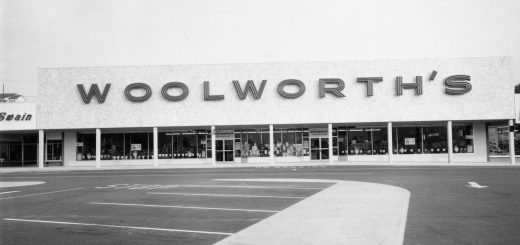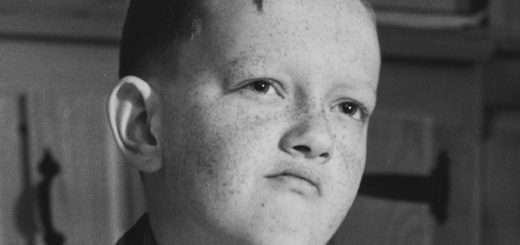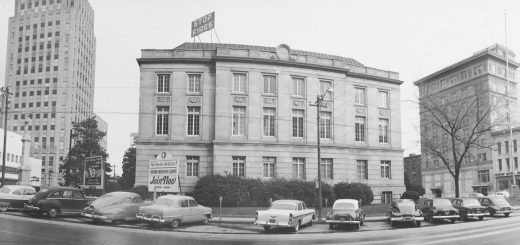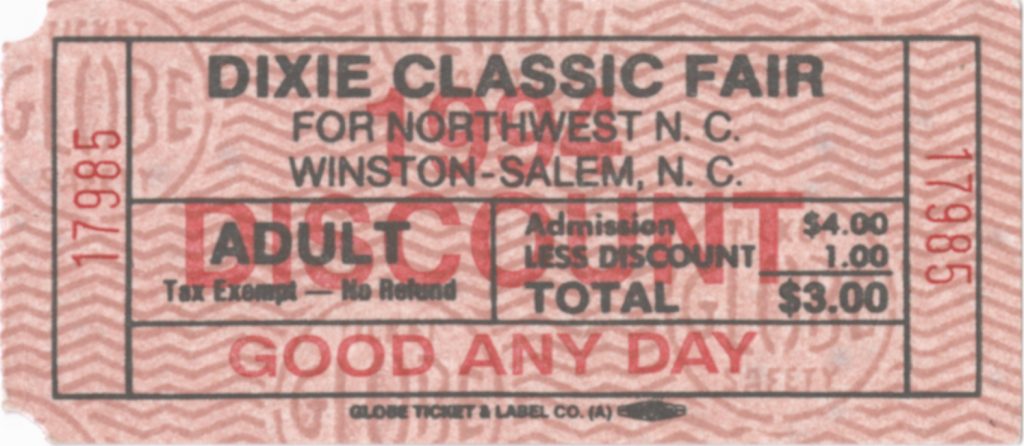
In a normal October, one not plagued with Covid-19, masks, social distancing, and closures on our favorite activities, many of us would be purchasing our tickets to attend the Dixie Classic Fair.
Of course, 2020 was already slated to be unusual because the name of the fair was changed to Carolina Classic Fair, scheduled to make its debut in 2020. Rather than just a name change in 2020, the entire format of the fair changed to a drive-through.
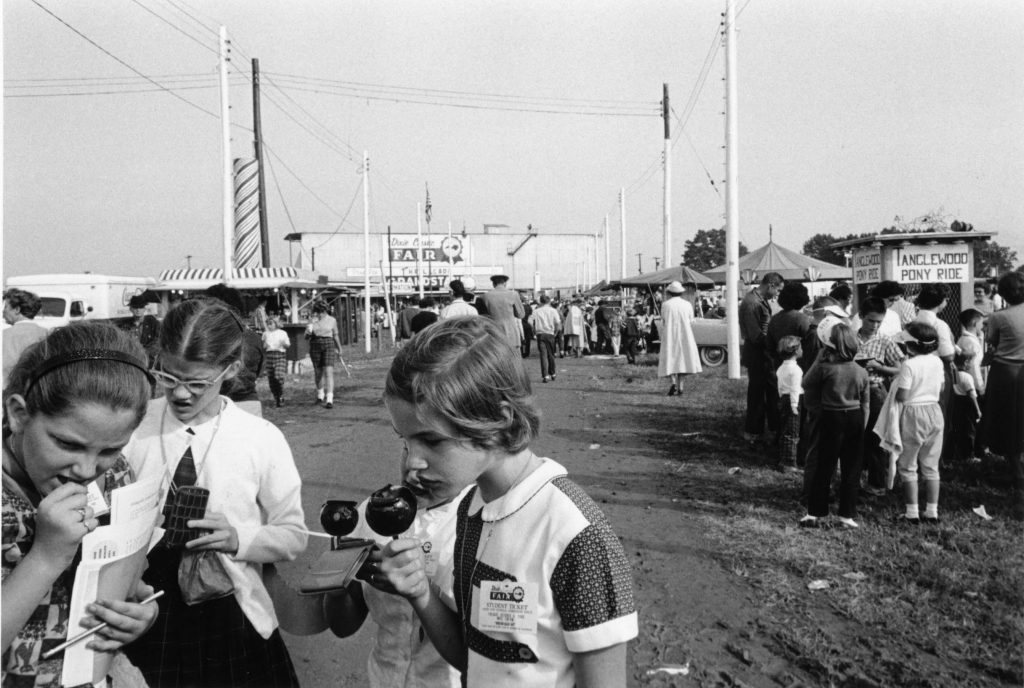
Here’s a look at the Dixie Classic Fair in 1960. The photo above and those following are from October 1960. The children seen above have their free fair tickets pinned to their clothing. The fair opened October 4th, Winston-Salem Day, with free attendance to school children in Winston-Salem. Forsyth County school children had free admission the following day. School children were released early from school just to attend the fair.
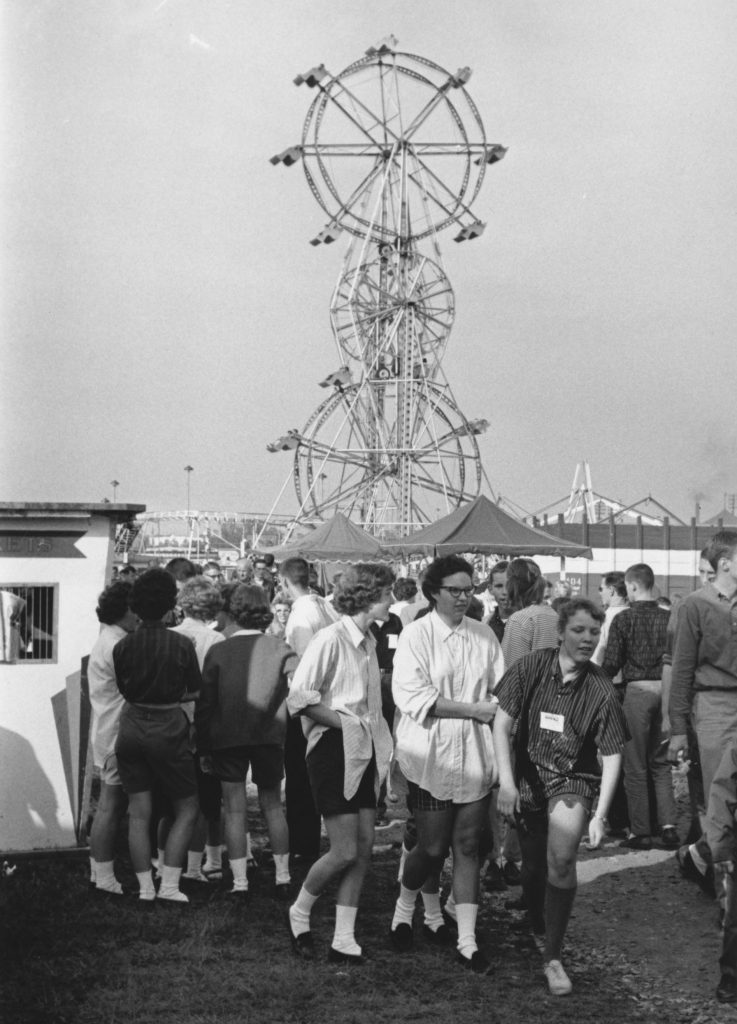
The admission numbers might have been higher if the weather had cooperated. Just like the previous year, the fair was plagued with rain or drizzle for many of the six days the fair was in town. The walkways were not paved in those days, so walking around the midway and around the exhibits was messy. To combat the muddy walkways, fair workers spread gravel throughout the fairgrounds. And, again there was talk of paving the walkways, but the idea was deemed to be too expensive by the fair commission.
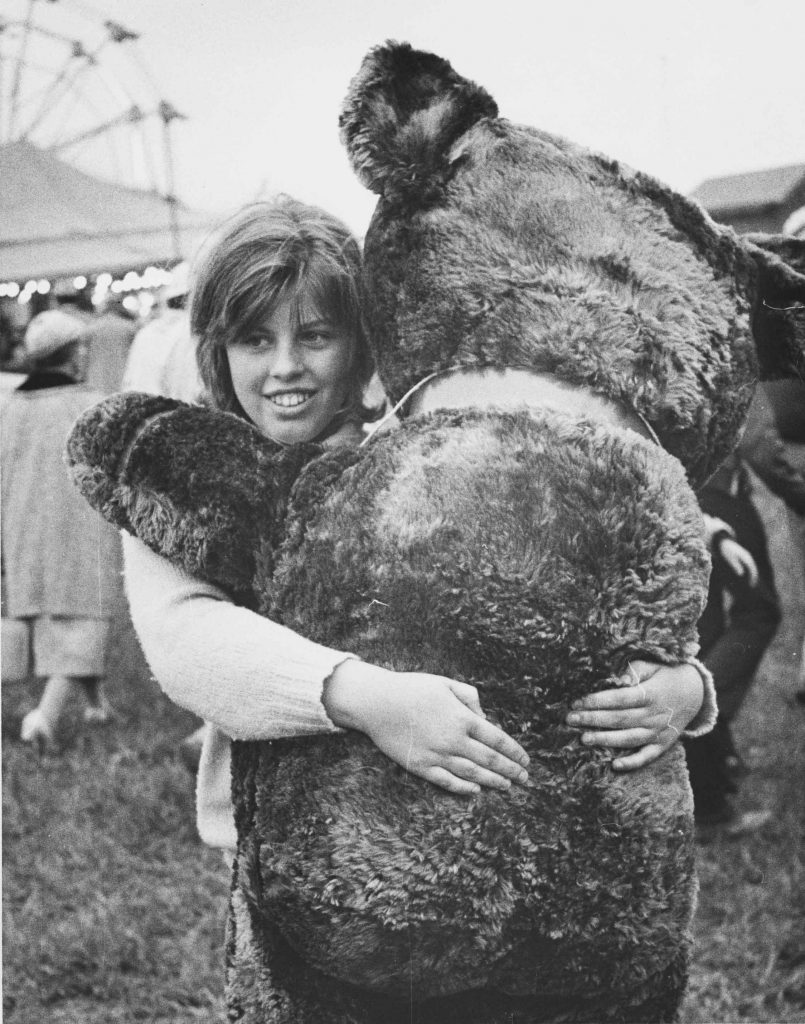
Despite the rainy weather, some tried their hands at the midway games and won prizes. Teresa Marie Ebert, shown above, won big when she accepted the challenge to toss the rings over the bottles.
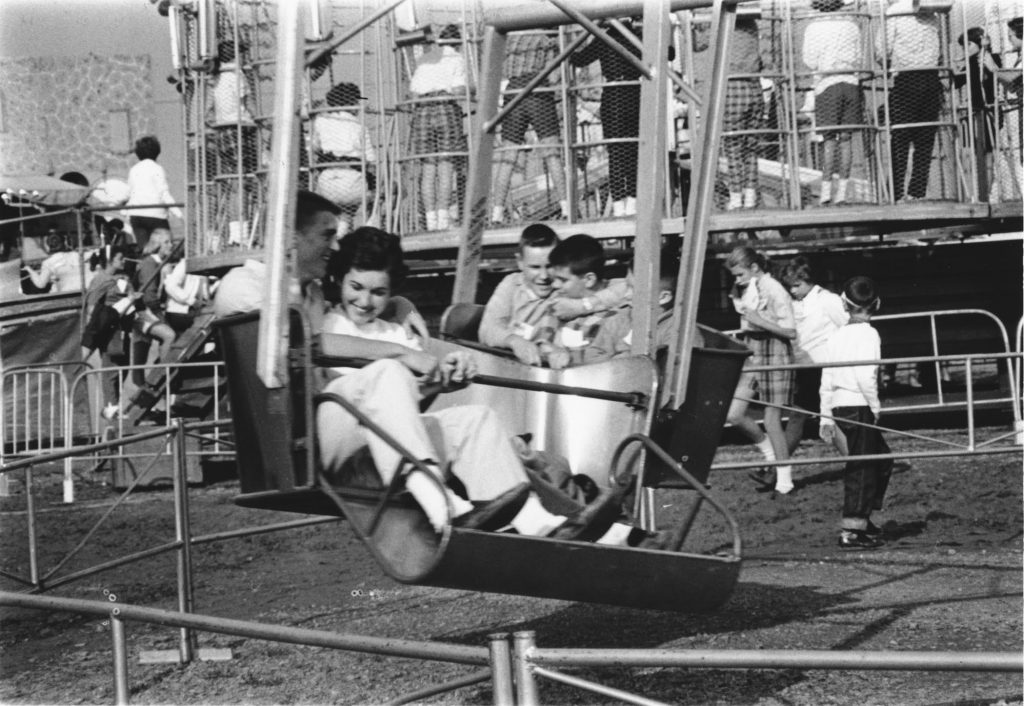
Rides on the midway, such as the Scrambler shown above, are always popular. A new ride in 1960 was called The Rotor. It was described as a ride “destined to upset many cotton-candy-filled stomachs.” This is how it worked, “You stand against a wall and the wall goes round and round until you’re pressed against it by centrifugal force. Then the floor drops out from under you, but you can’t – despite any claims gravity may have on you – fall.”
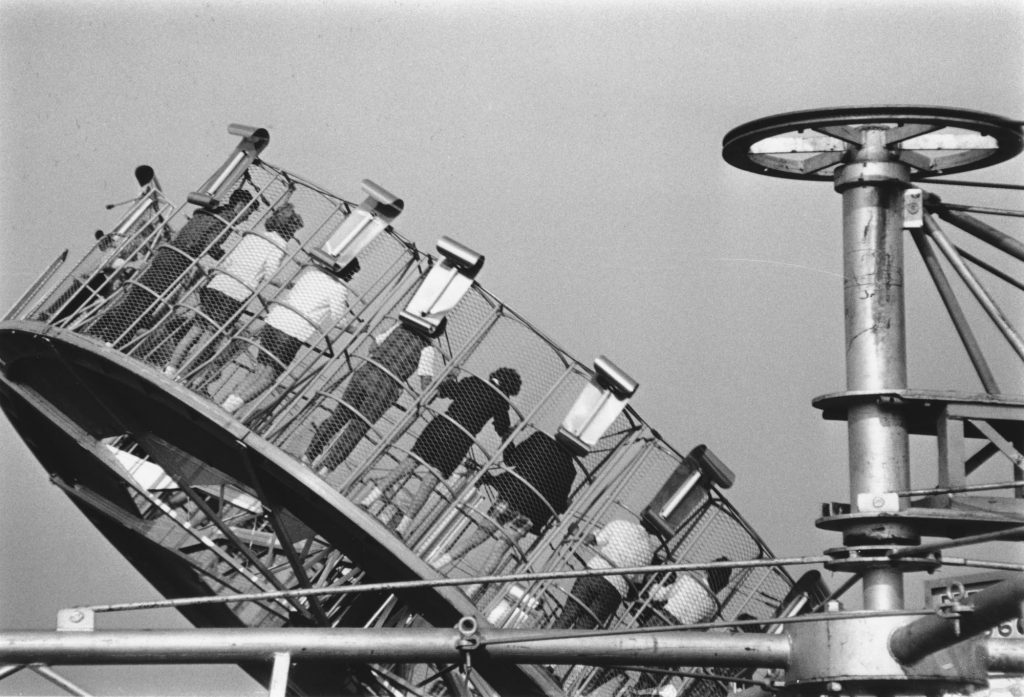
The Round Up, also a popular ride, is shown above. It is still found on the carnival circuit.
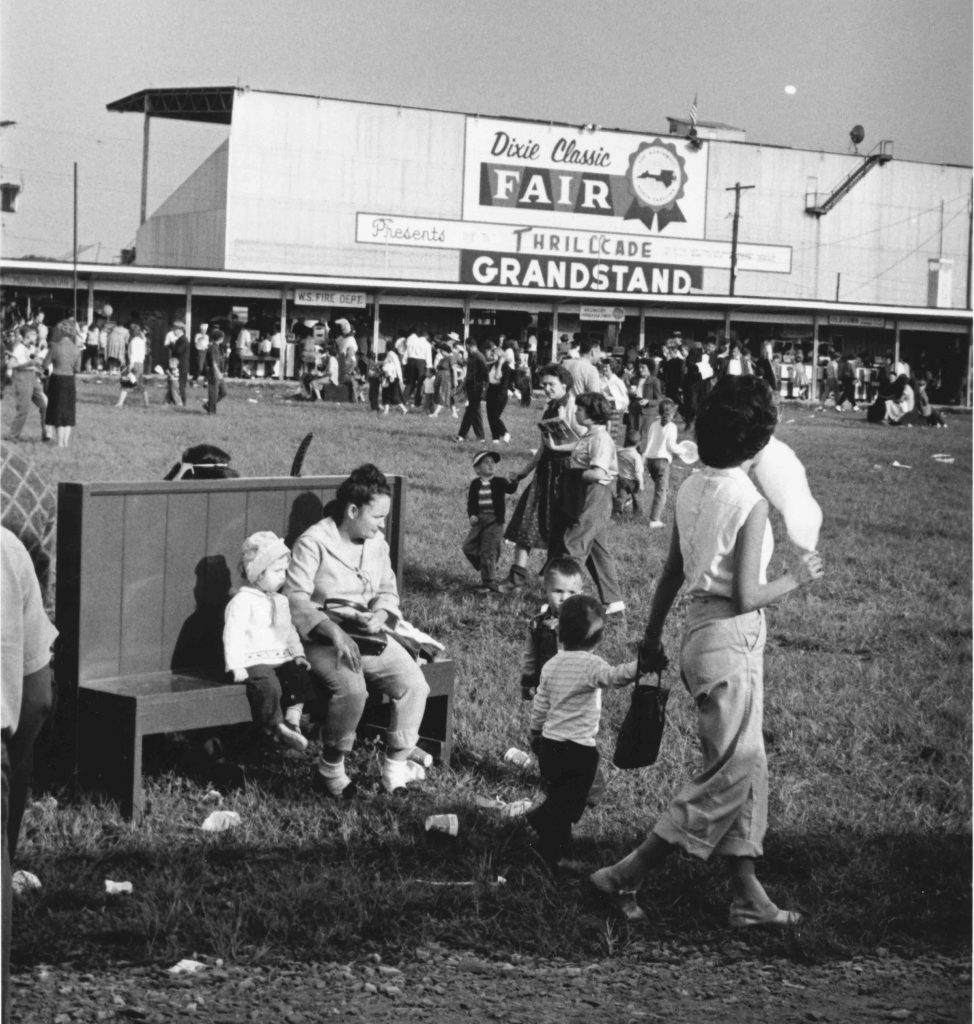
Grandstand shows are always exciting, and the big event featured Swenson’s Thrillcades. There were cars, motorcycles, and trucks that were racing, crashing, and flying through the air. On Saturday night, 25 to 30 NASCAR drivers were scheduled to participate in the modified and sportsman stock car races. Many of the regular drivers from Bowman Gray Stadium and several “hotshots” from Virginia were expected to participate in the 10-lap preliminary and 30-lap feature races.
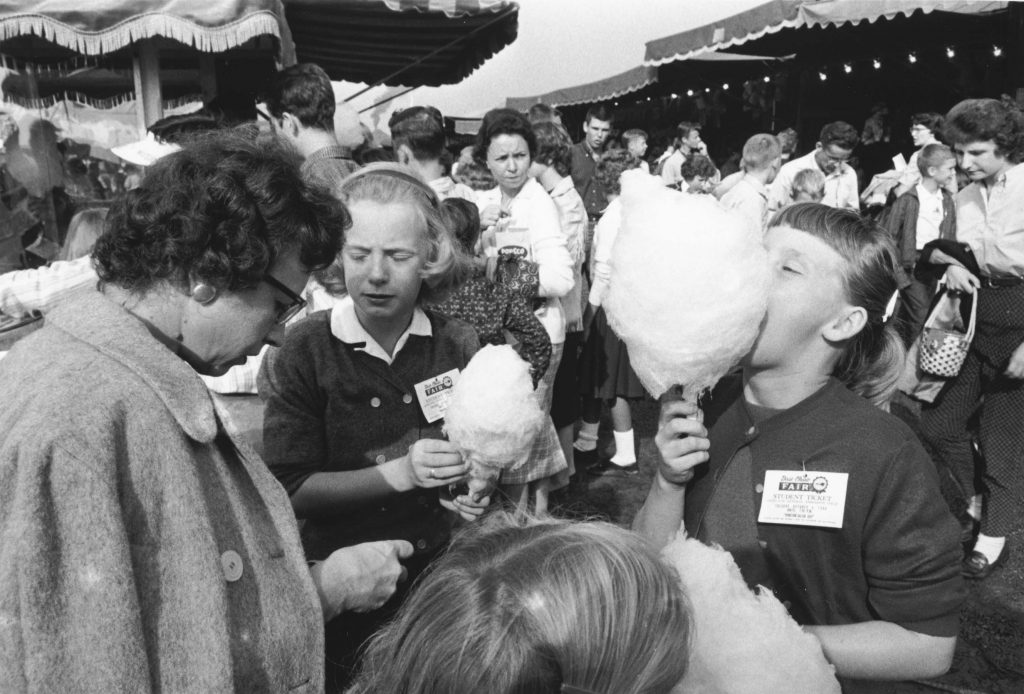
Other highlights of the midway were the cotton candy dispensing machines and dunking booths where the dunkee shouted out insults to see if the ball thrower could hit the mark and send the dunkee to the water.
1960 was a national election year, just as is 2020, so election booths for both parties urged passersby to take their free Kennedy or Nixon buttons and stickers. Even the fireworks got involved in politics when the candidates’ names were spelled out in loud and colorful style.
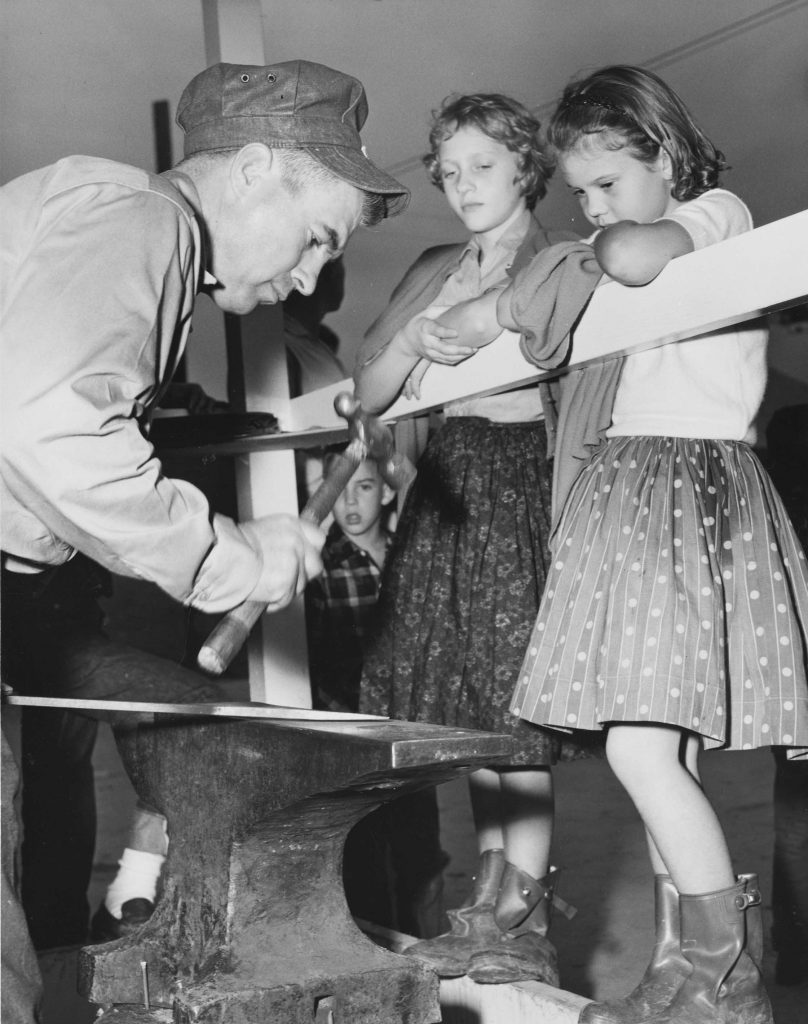
Bea Humley demonstrated his skills with the hammer and anvil for the boys and girls. The arts and crafts artisans showed their skills, as did the entrants in the homemaking and flower-arranging divisions. Also featured were the livestock entries. Award winners were listed daily in the Winston-Salem Journal.
The 1960 fair featured the first Quarter Horse show ever held in this area, with 27 entries. The show was organized by Frank Borden Hanes and Fred Bahnson Jr.
There were educational exhibits and industrial exhibits that focused on local businesses. A P. H. Hanes Knitting Company spokesman explained a machine that made t-shirts. Wachovia Bank and Trust Company showed their check-sorting machine that handled 900 checks a minute. Norfolk and Western Railway had an exhibit of model trains that was very popular.
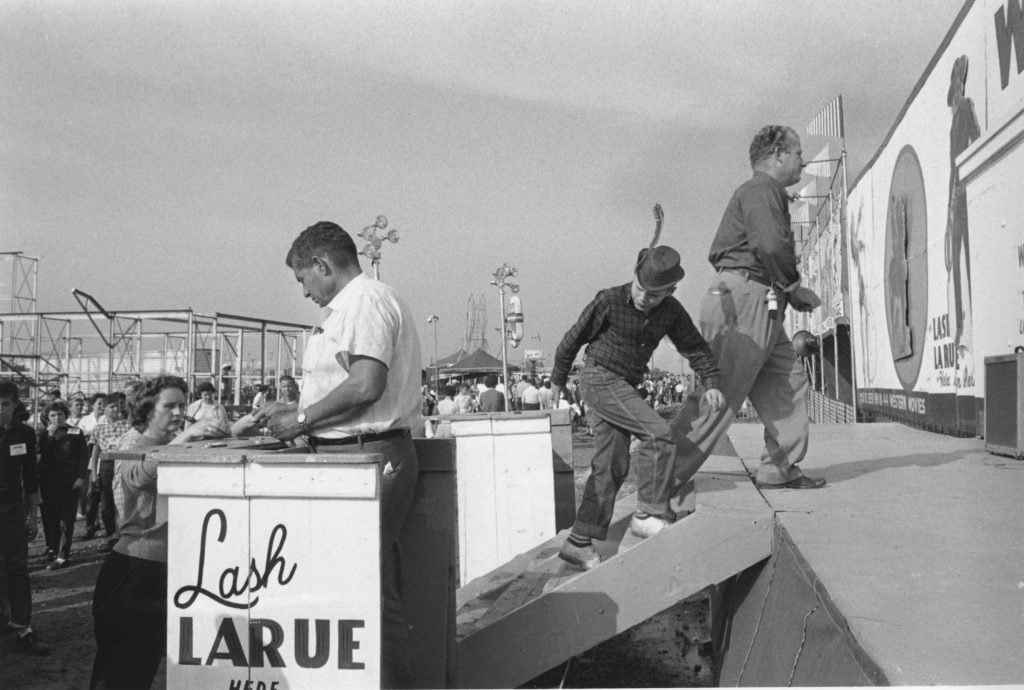
Even shows featuring popular western movie picture cowboys, like Lash Larue, enticed people into the shows on the midway.
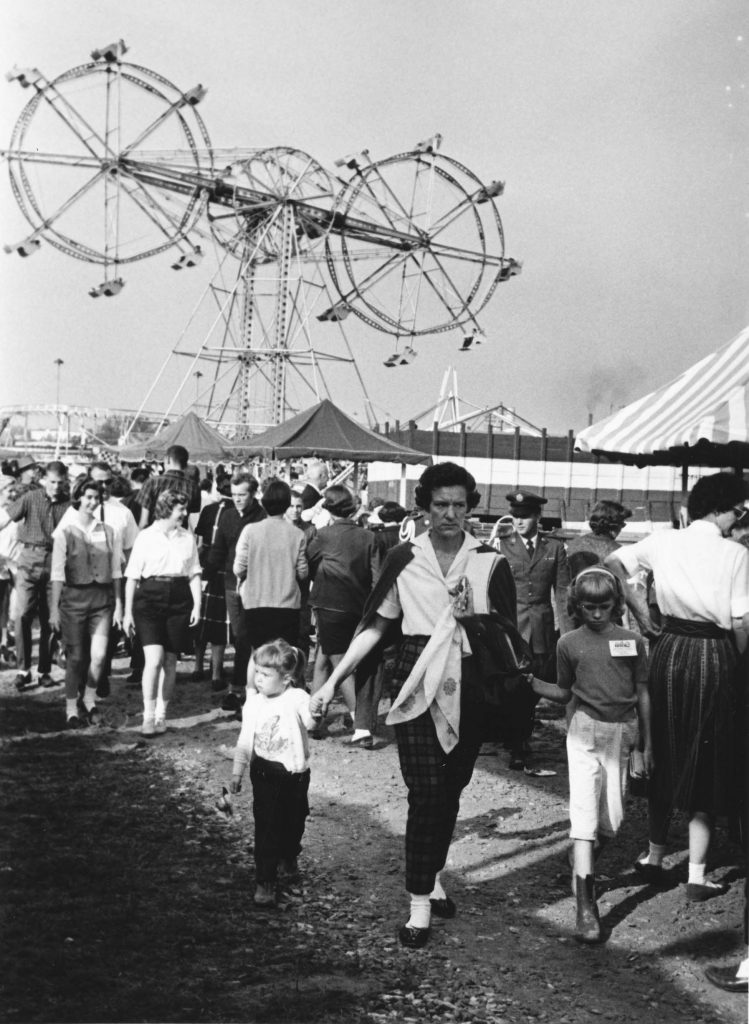
About 40,000 people attended the fair in 1960. This number was larger than the previous year. The fair was segregated in 1960, with African-Americans attending their own fair, The Carolina Fair, the following week at the fairgrounds.
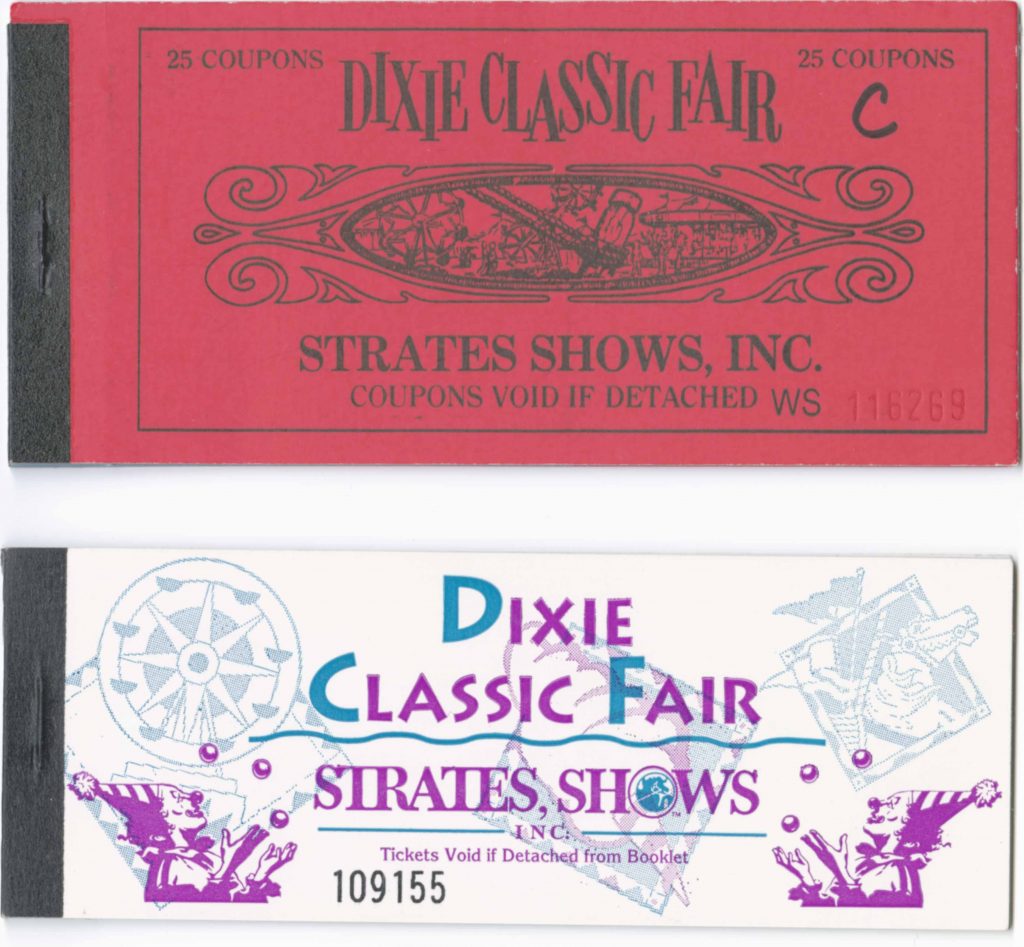
Do you remember purchasing ticket books with individual tickets that were torn out for rides on the midway? These ticket books are much more recent than 1960. The ride books were eventually replaced by another ticketing method.
See more photos of the Dixie Classic Fair on the website, www.digitalforsyth.org.
Black and white photos courtesy of Forsyth County Public Library Photograph Collection. Color images courtesy of Molly Grogan Rawls.


